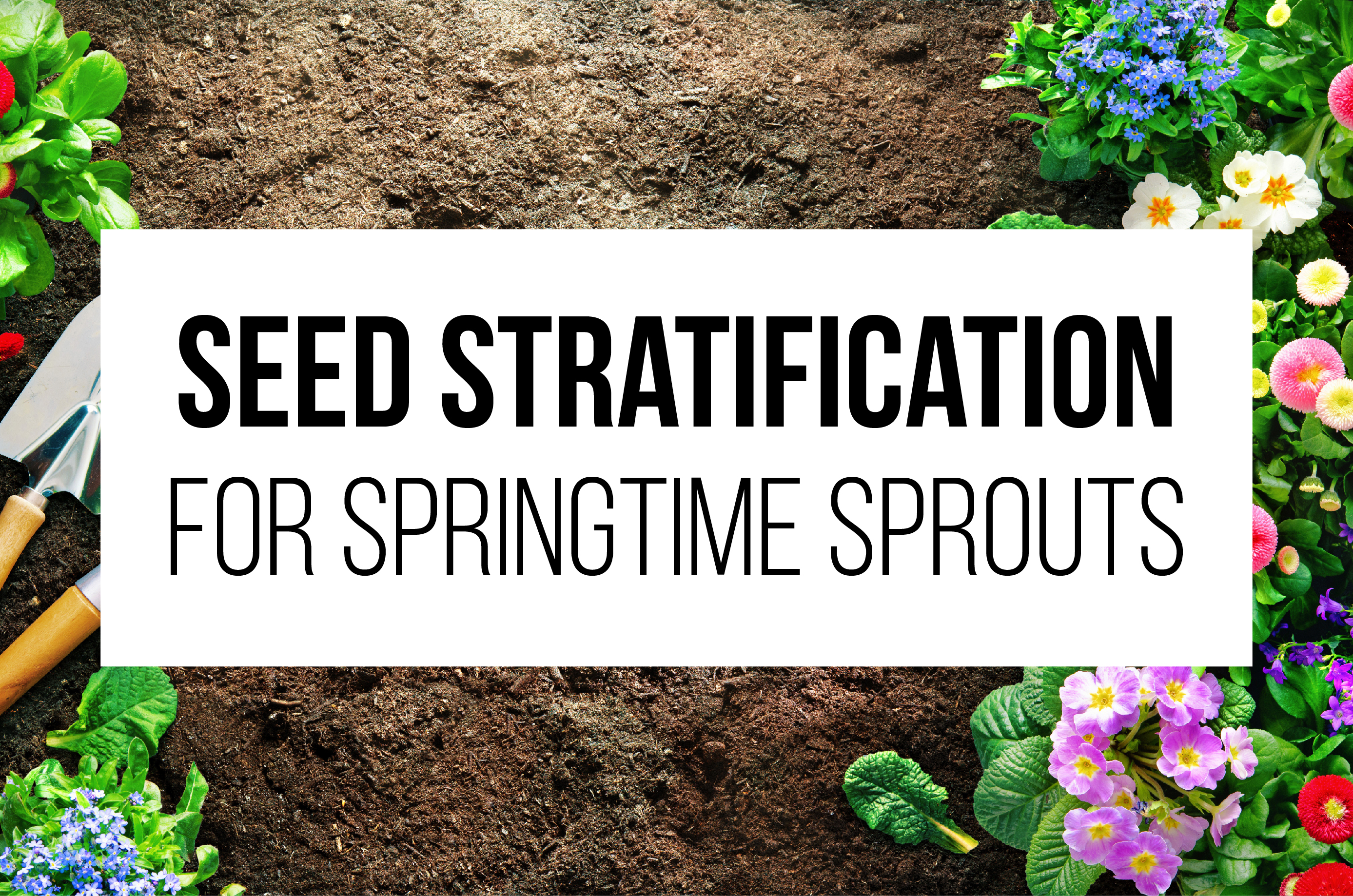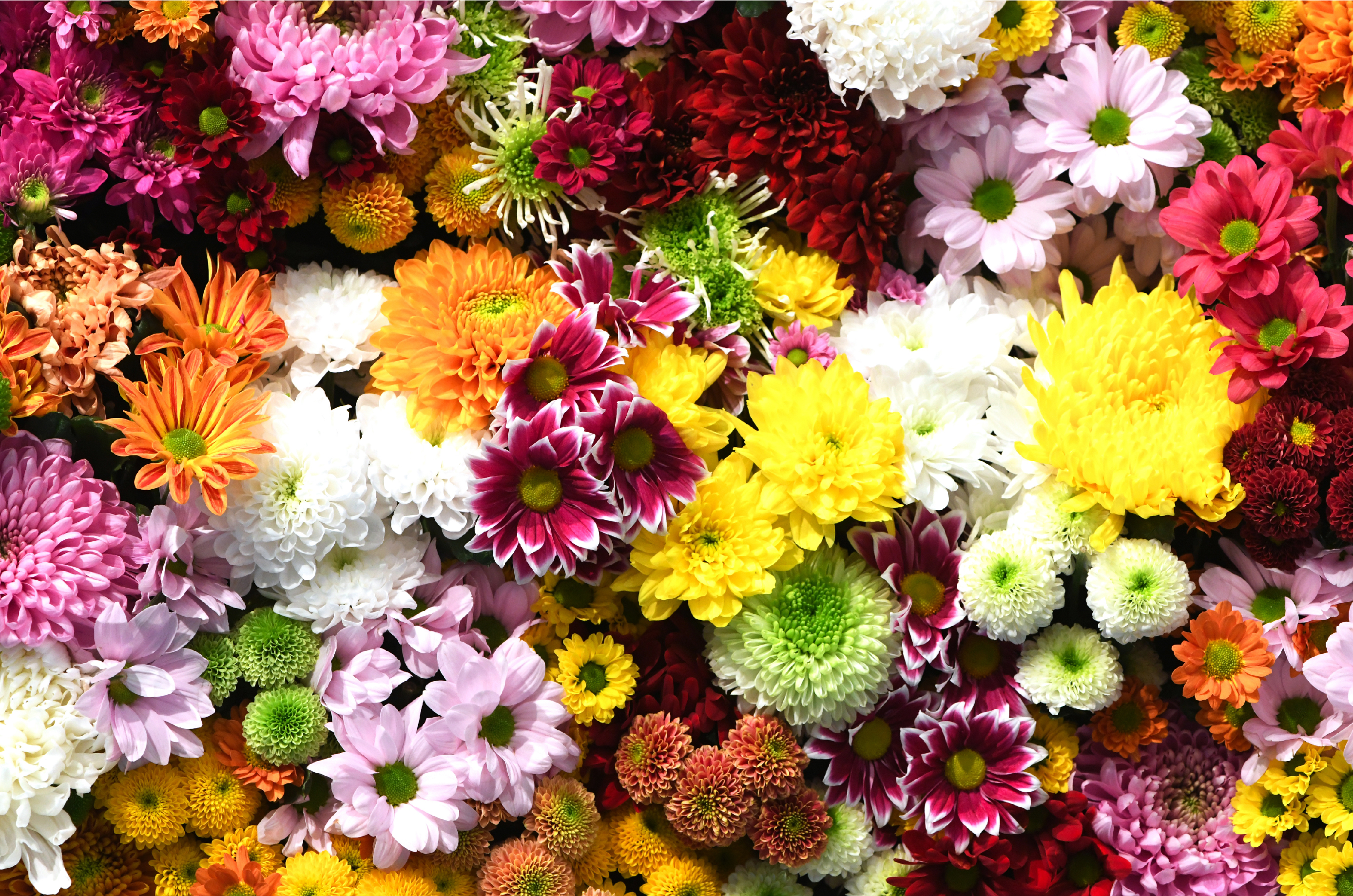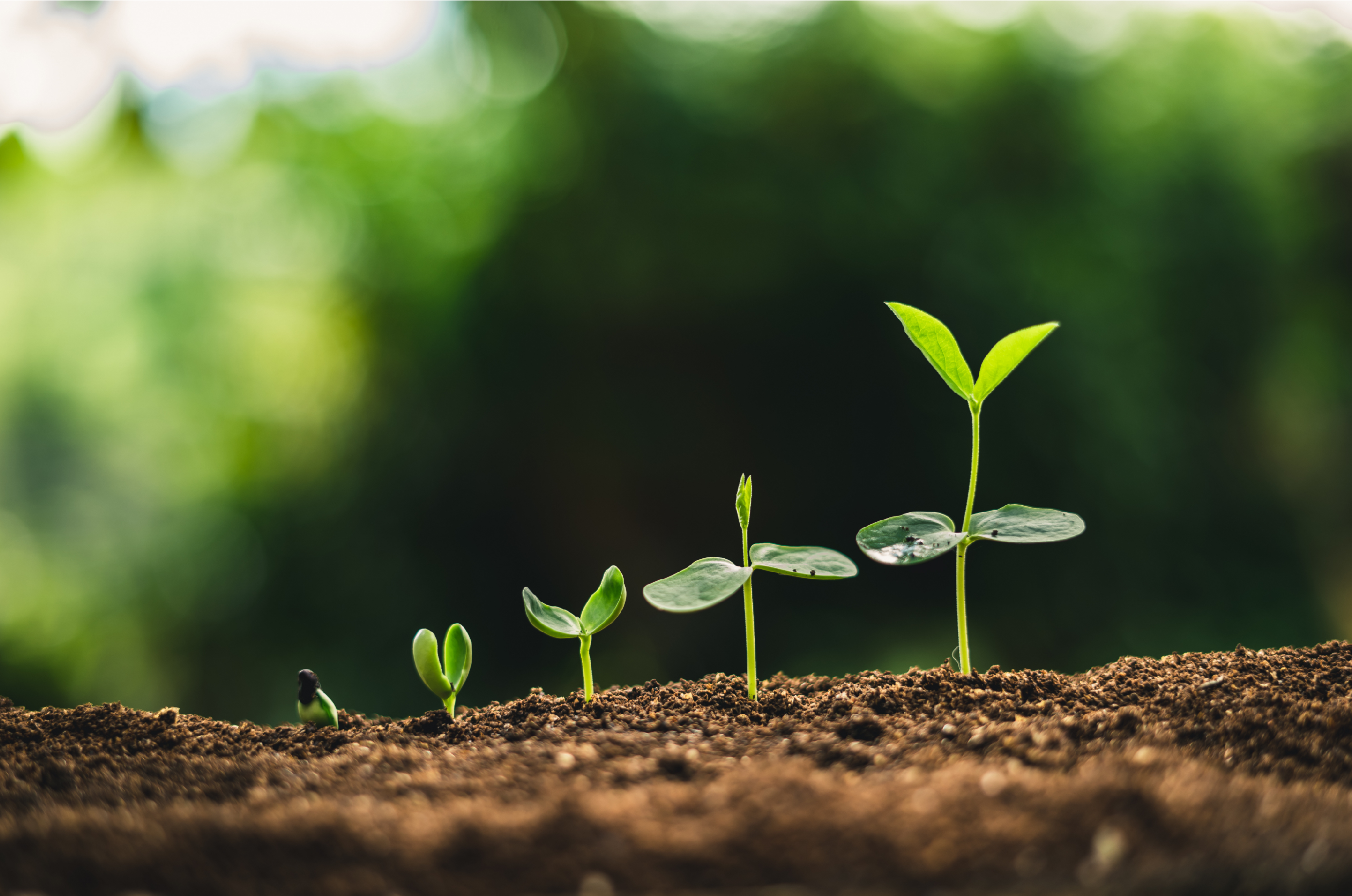Seed Stratification for Springtime Sprouts
Introduction
Are you dreaming of a garden filled with vibrant flowers and lush greenery? The key to unlocking that dream may lie in a simple, yet often overlooked, gardening technique known as seed stratification. Whether you’re a seasoned gardener or just starting, understanding and applying this method can greatly improve the germination and overall success of your plants. In this blog post, we’ll delve into the what, why, and how of seed stratification to help you transform your garden into a thriving oasis.
Understanding Seed Stratification
What is Stratification?
Seed stratification is a natural process that prepares seeds for germination by simulating the environmental conditions they would naturally experience. Many seeds, especially those of perennial plants and trees native to temperate regions, require a period of cold and moist conditions to break their dormancy. This period mimics winter, signaling to the seeds that it’s safe to sprout once warmer temperatures return. Without this process, many seeds would remain dormant and fail to germinate, even under ideal growing conditions.
Why is Stratification Necessary?
In nature, seeds fall to the ground in autumn, where they are exposed to winter’s cold and moisture. This chilling period is crucial for breaking down the seed coat and other physiological barriers to germination. When gardeners collect and store seeds, these natural cues are absent, making it necessary to manually simulate the winter experience through stratification. However, if you plan to plant in spring, you need to stratify the seed before sowing outdoors. By understanding and replicating these natural processes, we can significantly improve our chances of successful germination and a thriving garden.
The Stratification Process
- Selecting Seeds: Before beginning, it’s important to identify which seeds require stratification. Seeds are typically stratified in one of two ways; dry stratification or moist stratification. Research your plant species to determine if and what type of stratification is done. Here are some common varieties that DO require stratification:
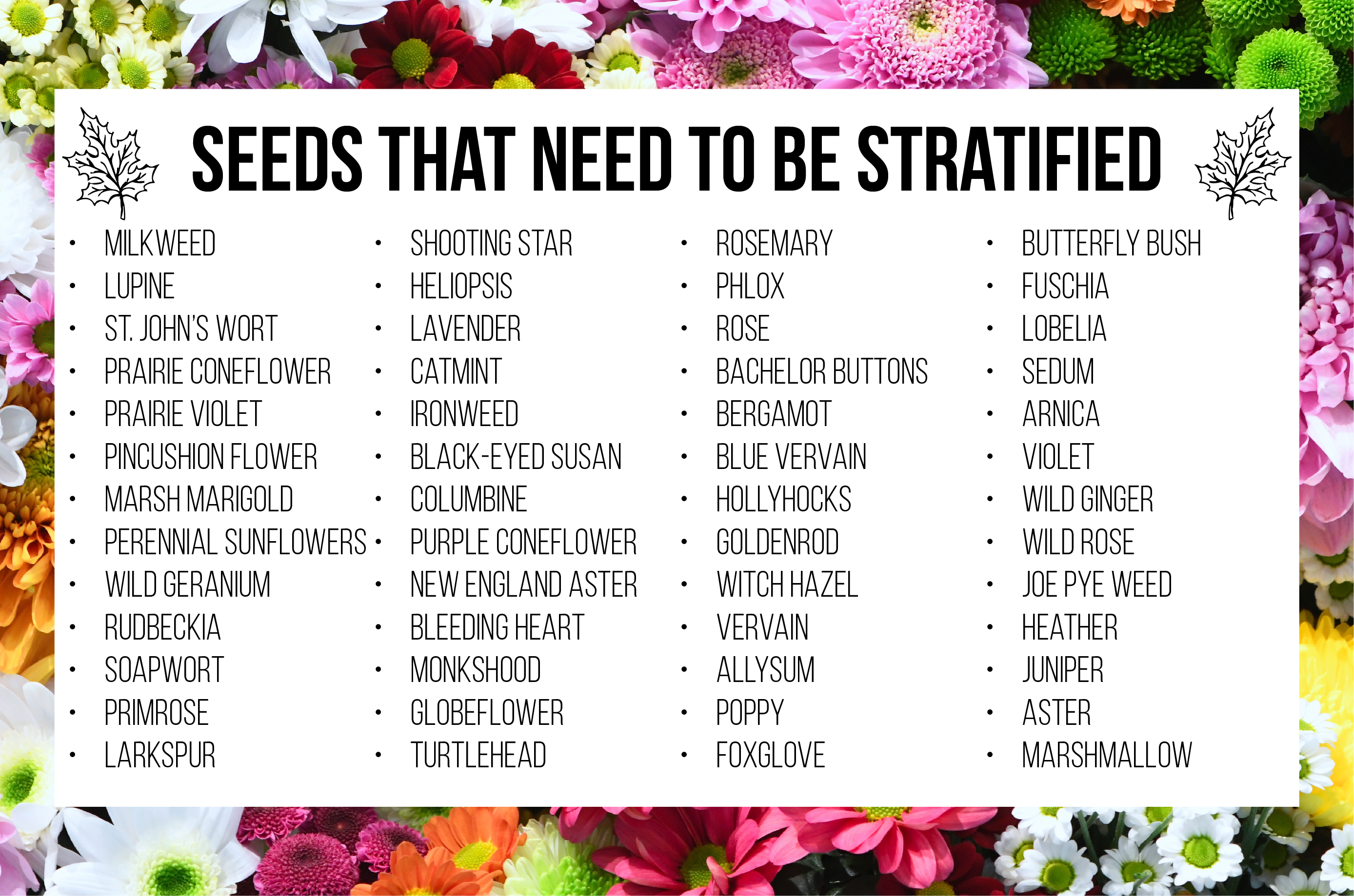
- Dry Stratification: Dry stratification is the process of subjecting seeds to cold temperatures for a month or longer before planting to mimic a natural winter dormant period. We recommend storing your seeds in your refrigerator, or an unheated building for 30-120 days, or as recommended for your plant species.
- Moist Stratification: Moist stratification is the process where seeds are mixed with a moistened substrate (fresh sawdust, builder’s sand, vermiculite, peat moss, or similar material)
- and stored cold for ten days to three months. This process mimics the cold, damp winter conditions that seeds experience naturally when planted outside during fall. Therefore, it is not necessary to use this pretreatment for a seed planted in the fall (direct seeding) as dormancy will be broken naturally in the soil over winter.
- To begin this process, start by moistening a sterile medium like sand, vermiculite, or peat moss. The medium should be damp but not soaked. Mix your seeds with this medium in a plastic bag or container.
- Next, place your container in the refrigerator for 1 month before planting. If your seedlings start to sprout while in the refrigerator, remove them immediately and plant them in the ground or pots until it’s time to plant outdoors.
- Planting: After completing the stratification process, plant your seeds according to their specific needs regarding soil type, depth, and spacing. Also, water the area well, as all direct seedings in spring or early summer, pre-treated or not, benefit from extra water during the first two months after seeding.
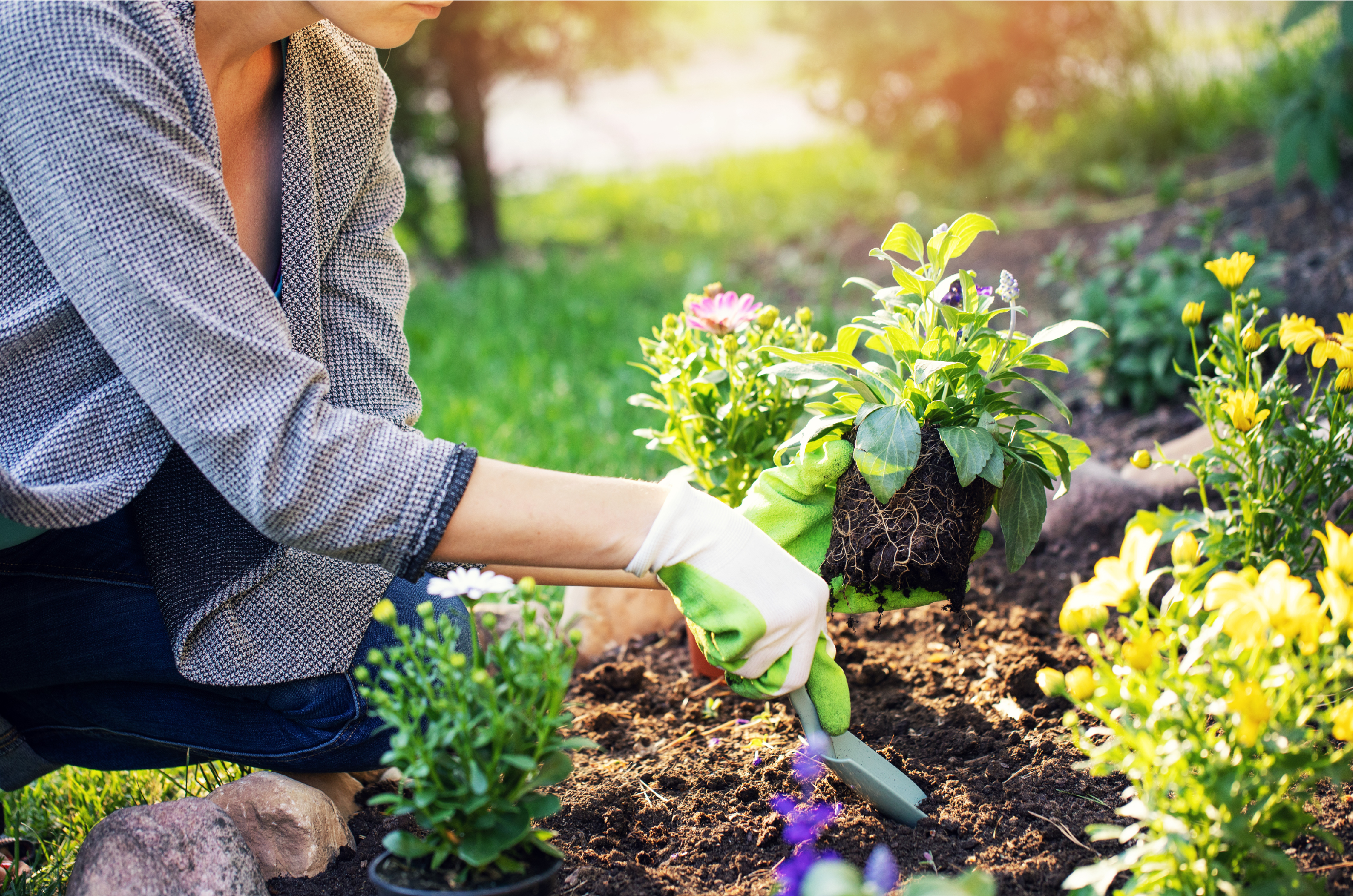
Tips and Tricks for Successful Stratification
- Label your containers with the seed type and date to keep track of the stratification period.
- Check the seeds periodically for signs of germination or mold.
- Be patient and flexible; some seeds may require adjustments to their stratification period based on their response.
Conclusion
Seed stratification may seem like an extra step in the gardening process, but it’s a critical one for many plants. By mimicking the natural cycles of seasons, we can encourage a wider variety of plants to thrive in our gardens. Remember, gardening is not just about planting and watering; it’s about understanding and working with nature’s rhythms. With the knowledge of seed stratification, you are ready to bring even the most stubborn seeds to life. Happy gardening!
If you have any questions that weren’t answered or need more information, feel free to stop by and see us at either the Broad St. or Mechanicsville location. You can also give us a call or drop us an email at info@stranges.com. We’re here to help you grow better!
Connect with Strange’s:
Instagram: @StrangesRVA Facebook: @Strange’s Florist
Mechanicsville: 804-321-2200 West Broad: 804-360-2800




